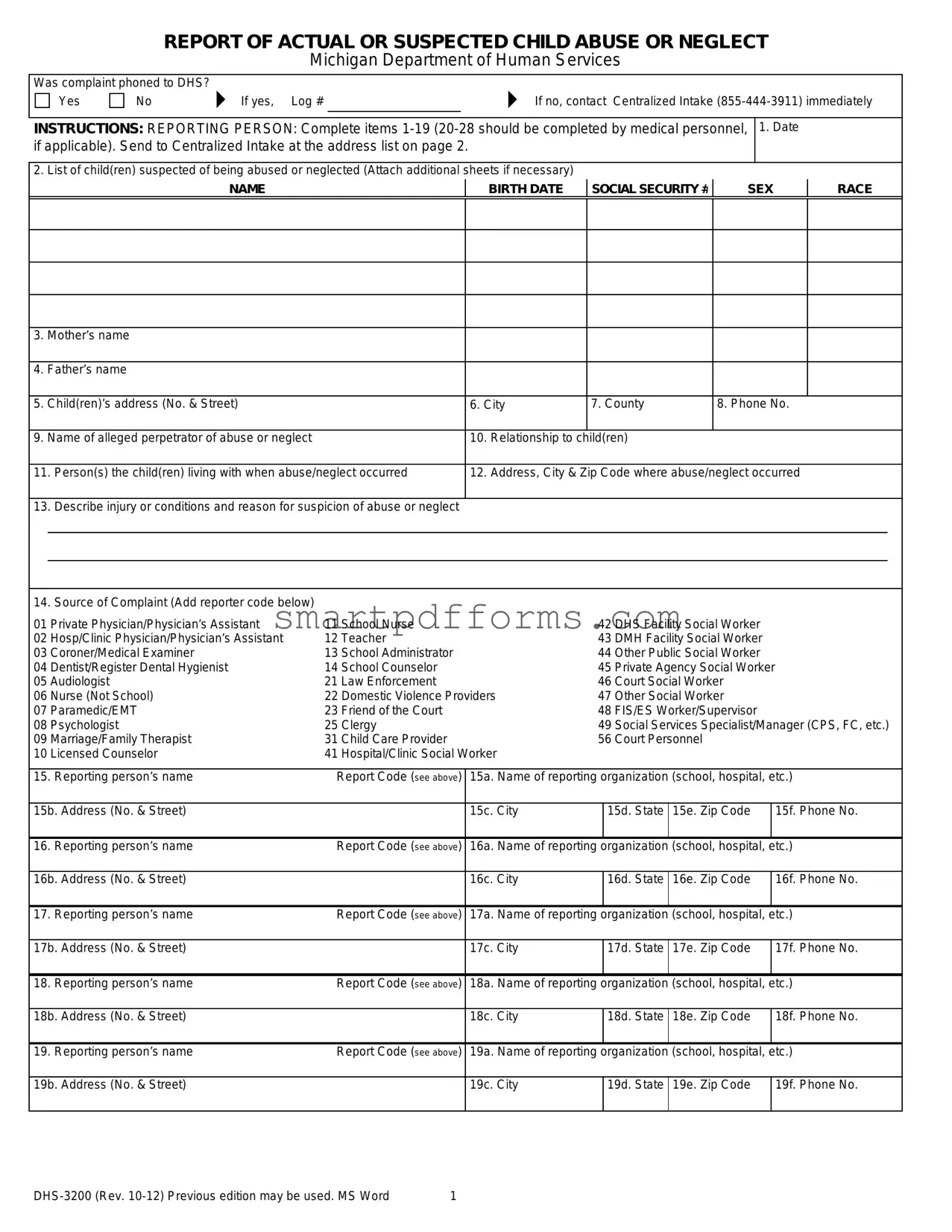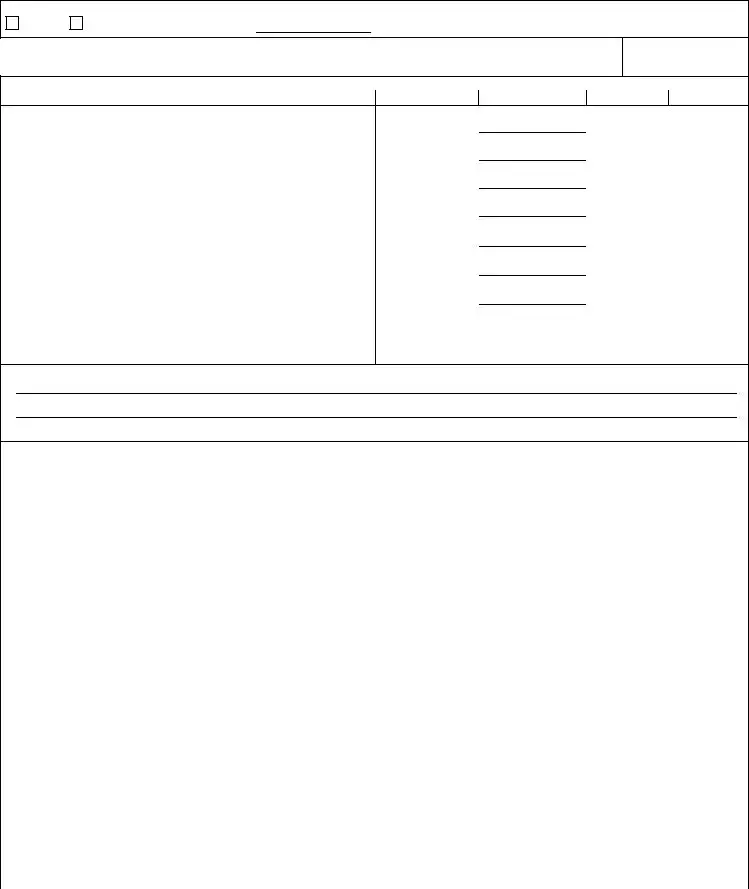TO BE COMPLETED BY MEDICAL PERSONNEL WHEN PHYSICAL EXAMINATION HAS BEEN DONE
20. Summary report and conclusions of physical examination (Attach Medical Documentation)
|
21. |
Laboratory report |
|
|
22. X-Ray |
|
|
|
|
|
|
|
|
|
|
|
23. |
Other (specify) |
|
|
24. History or physical signs of previous abuse/neglect |
|
|
|
|
|
|
YES |
|
NO |
|
25. |
Prior hospitalization or medical examination for this child |
|
|
|
|
|
|
|
DATES |
|
|
|
|
PLACES |
|
|
|
|
|
|
|
|
|
|
|
|
|
|
|
|
|
|
|
|
|
|
|
|
|
|
|
|
|
|
|
|
|
|
|
|
|
26. |
Physician’s Signature |
|
27. Date |
|
28. Hospital (if applicable) |
|
|
|
|
|
|
|
|
|
Department of Human Services (DHS) will not discriminate |
against |
any individual or group |
AUTHORITY: |
P.A. 238 of 1975. |
|
because of race, religion, age, national origin, color, height, weight, marital status, sex, sexual |
|
COMPLETION: |
Mandatory. |
|
orientation, gender identity or expression, political beliefs or disability. If you need help with |
|
PENALTY: |
None. |
|
reading, writing, hearing, etc., under the Americans with Disabilities Act, you are invited to make |
|
your needs known to a DHS office in your area. |
|
|
|
|
|
INSTRUCTIONS
GENERAL INFORMATION:
This form is to be completed as the written follow-up to the oral report (as required in Sec. 3 (1) of 1975 PA 238, as amended) and mailed to Centralized Intake for Abuse & Neglect. Indicate if this report was phoned into DHS as a report of suspected CA/N. If so, indicate the Log
# (if known). The reporting person is to fill out as completely as possible items 1-19. Only medical personnel should complete items 20-28.
Mail this form to:
Centralized Intake for Abuse & Neglect 5321 28th Street Court S.E.
Grand Rapids, MI 49546
OR
Fax this form to 616-977-8900 or 616-977-8050 or 616-977-1158 or 616-977-1154
OR
email this form to DHS-CPS-CIGroup@michigan.gov
1.Date – Enter the date the form is being completed.
2.List child(ren) suspected of being abused or neglected – Enter available information for the child(ren) believed to be abused or neglected. Indicate if child has a disability that may need accommodation.
3.Mother’s name – Enter mother’s name (or mother substitute) and other available information. Indicate if mother has a disability that may need accommodation.
4.Father’s name – Enter father’s name (or father substitute) and other available information. Indicate if father has a disability that may need accommodation.
5.-7. Child(ren)’s address – Enter the address of the child(ren).
8.Phone – Enter phone number of the household where child(ren) resides.
9.Name of alleged perpetrator of abuse or neglect – Indicate person(s) suspected or presumed to be responsible for the alleged abuse or neglect.
10.Relationship to child(ren) – Indicate the relationship to the child(ren) of the alleged perpetrator of neglect or abuse, e.g., parent, grandparent, babysitter.
11.Person(s) child(ren) living with when abuse/neglect occurred – Enter name(s). Indicate if individuals have a disability that may need accommodation.
12.Address where abuse / neglect occurred.
13.Describe injury or conditions and reason of suspicion of abuse or neglect – Indicate the basis for making a report and the information available about the abuse or neglect.
14.Source of complaint – Check appropriate box noting professional group or appropriate category.
Note: If abuse or neglect is suspected in a hospital, also check hospital.
DHS Facility – Refers to any group home, shelter home, halfway house or institution operated by the Department of Human Services. DCH Facility – Refers to any institution or facility operated by the Department of Community Health.
15.-19 - Reporting person’s name - Enter the name and address of person(s) reporting this matter.


